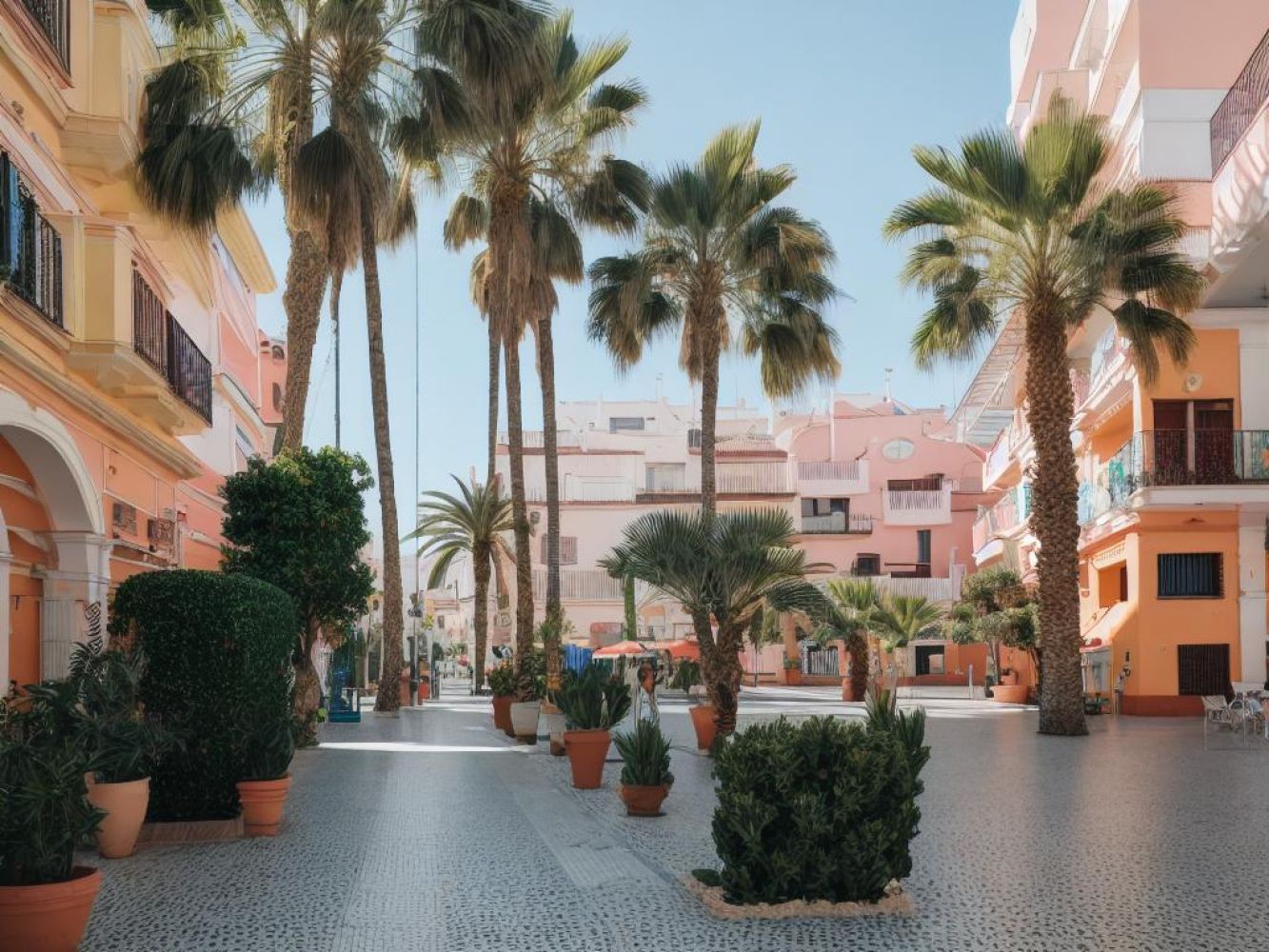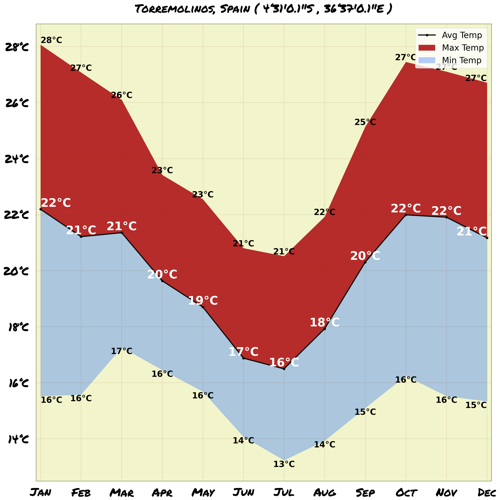Understand
Once a humble fishing village in the 1920s, Torremolinos has since transformed into a thriving tourist destination. With a nominal population of around 43,000 that swells to 250,000 during the tourist season, Torremolinos is known for its breathtaking beaches and vibrant pedestrian-only street, Calle San Miguel. Lined with shops, this bustling thoroughfare leads from the town center to the beach. Its lower half consists of a winding stair-stepped path, providing both excitement on the descent and invigorating exercise on the ascent. In the late 1980s, Torremolinos experienced a drastic reputation shift, moving from being labeled the "armpit of the Costa del Sol" to becoming an appealing, clean, and safe haven for tourists seeking the sunniest spot in Europe. It has also become a preferred vacation spot for Spanish tourists, with certain districts, such as La Carihuela, retaining a distinct Spanish ambiance. Torremolinos is comprised of various districts, including El Bajondillo, the beach area closest to the town, Playamar, the commercial tourist hub with iconic high-rise hotels from the 60s and 70s, and Los Alamos, a pleasant beachfront region. On the western side of the town center lies La Carihuela, an old fishing village where traces of its architectural past still remain. Adjacent to the neighboring municipality of Benalmádena is Montemar, another district known for its unique charm. La Carihuela's culinary scene is renowned throughout Spain, particularly for its delectable seafood dishes. This charming village, which once attracted the likes of Frank Sinatra and other celebrities, runs parallel to one of the Costa del Sol's finest beaches. While summer is the peak tourist season, Torremolinos experiences mild winter weather, rarely dipping below 10°C. For those seeking tranquility, visiting during the winter offers a unique opportunity to explore a quieter side of Torremolinos, with temperatures providing respite from the harsh winters in other parts of Europe.
Map & Climate
Popular Foods
 Paella - A iconic Spanish rice dish originating from Valencia, made with saffron, garlic, onions, a variety of vegetables, and different types of meat, fish, or seafood. It's typically cooked in a wide, shallow pan over an open flame.
Paella - A iconic Spanish rice dish originating from Valencia, made with saffron, garlic, onions, a variety of vegetables, and different types of meat, fish, or seafood. It's typically cooked in a wide, shallow pan over an open flame.  Tortilla de Patatas - A widely popular Spanish omelette made with potatoes, onions, and sometimes peppers. This dish is typically cooked in olive oil and can be enjoyed as a meal on its own, or as a side at gatherings and festivals.
Tortilla de Patatas - A widely popular Spanish omelette made with potatoes, onions, and sometimes peppers. This dish is typically cooked in olive oil and can be enjoyed as a meal on its own, or as a side at gatherings and festivals.  Gazpacho - A chilled, refreshing Spanish soup made primarily of raw tomatoes, peppers, cucumbers, onions, garlic, bread, and olive oil. It often includes other regional ingredients, and its consistency varies from chunky to smooth. Gazpacho is traditionally served during hot summer months, making it a perfect treat for those looking to cool off.
Gazpacho - A chilled, refreshing Spanish soup made primarily of raw tomatoes, peppers, cucumbers, onions, garlic, bread, and olive oil. It often includes other regional ingredients, and its consistency varies from chunky to smooth. Gazpacho is traditionally served during hot summer months, making it a perfect treat for those looking to cool off. 




Comments
NO COMMENTS